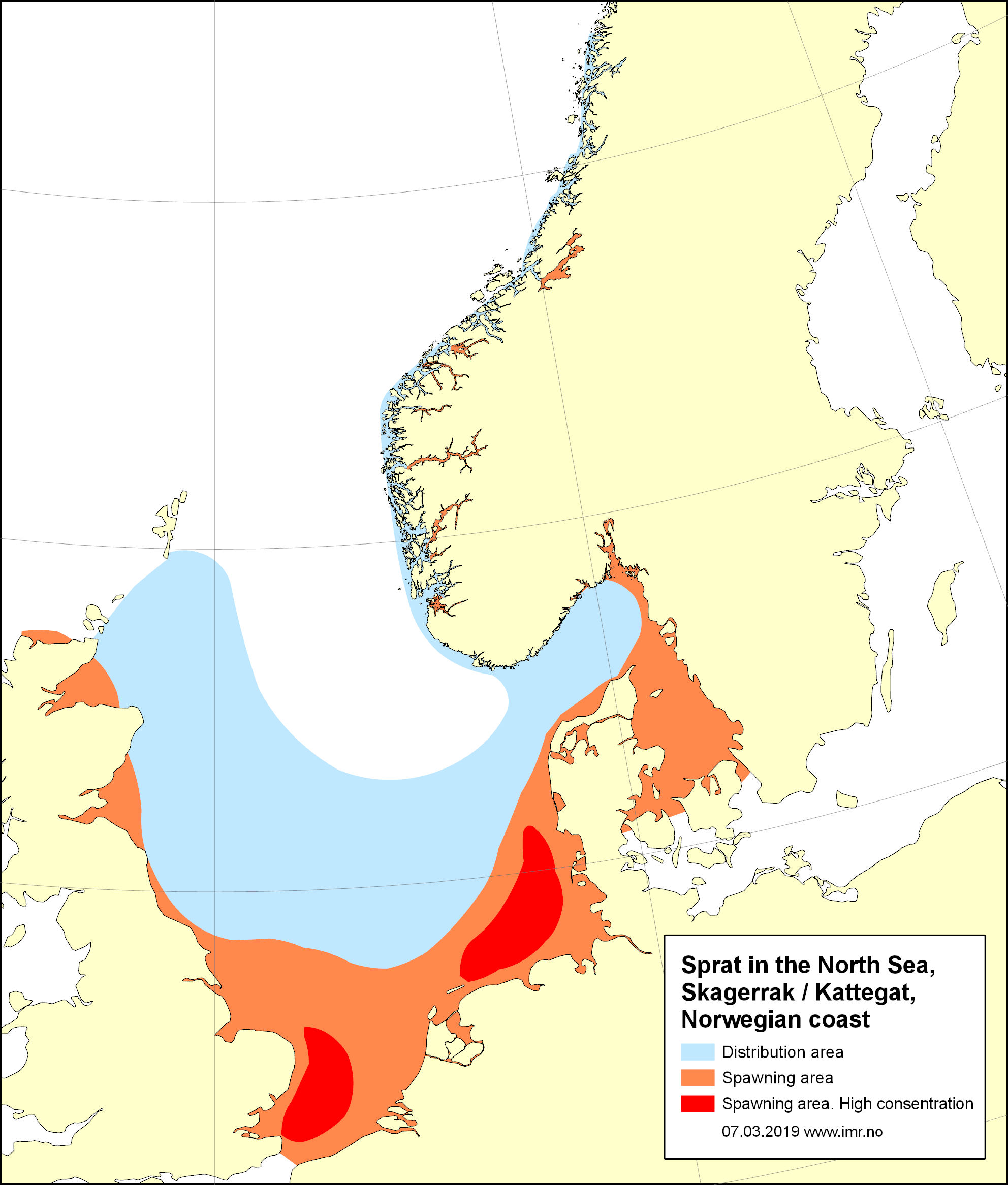Coastal sprat

Sprat in our waters rarely get older than 4–5 years and are dominated by 0- and 1-year-old fish.
Photo: Anette Karlsen / Institute of Marine ResearchCoastal sprat.
Photo: Erling Svensen / IMRSprat (Sprattus sprattus).
Photo: Erling Svensen / IMRThe sprat makes vertical migrations related to daylight changes and vertical migrations in prey. When it darkens, it swims towards the surface. In summer, it stays quite close to the surface.
Sprat become sexually mature as 1–2 year-olds, probably depending on their growth in their first year. We know little about the coastal populations of sprats, recruitment and migration. It spawns in the fjords, and coastal sprat along the Norwegian coast differ genetically from sprat elsewhere. Sprat in our waters rarely get older than 4–5 years and are dominated by 0- and 1-year-old fish. Since catches depend on the amount of young sprat, fishing is largely influenced by variation in the year class strength. With good growth, sprat from the new year class can reach a size of 9.5–10 cm during the autumn and enter the catches already in their fourth quarter.
Management
Since 2007, the coastal sprat has been protected from 1 January to 31 July to avoid fishing during the spawning period. There are no population estimates for sprats in the fjords. Sprat east of Lindesnes is managed through a quota agreement with the EU (Skagerrakavtalen). The Norwegian coastal fishing after sprat west of Lindesnes was not regulated by quota until 2017. From 2017, quotas for fishing have been set based on survey indices in the main sprat fjords: Hardangerfjorden, Sognefjorden and Nordfjord. Also the industry's quality requirements (size and fat content) influence when and where the fishing will be opened and how it will be carried out in the individual fjords.
Fisheries
Fishing on coastal sprat mainly takes place in the autumn with coastal seine vessels (less than 28 meters). The sprat is almost exclusively used for human consumption, such as canned “sardines” and pickled "anchovies" (juleansjos). The decrease in total catches from the 1970s may be related to changes in the canning industry, the number of vessels participating in the fishery as well as environmental changes affecting the productivity of the sprat.
Published: 18.12.2018 Updated: 08.05.2020


